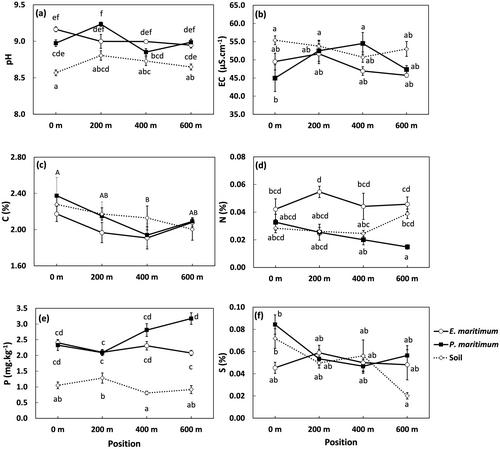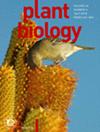Species-specific functional trait responses in two species coexisting along a shore-to-inland dune gradient
IF 3.6
3区 生物学
Q1 PLANT SCIENCES
引用次数: 0
Abstract

沿岸沙丘向内陆沙丘梯度共存的两个物种的物种特异性功能特征反应
沿海沙丘的特点是非生物压力梯度大,通常从内陆地区向海岸线递增。因此,沙丘梯度是研究种内物种对环境变化的反应以及调查哪些因素驱动群落变化的独特机会。本研究旨在考察两个共存物种对西班牙西北部沙丘梯度环境变化的功能性状变异。研究还调查并比较了梯度两端的性状趋同性。我们测量了与植物利用光、水和养分的效率有关的叶片功能特征,还测量了可能的压力因素(盐分含量和 pH 值)以及土壤中限制性资源(水和养分)的可用性。大多数土壤变量都呈现出非定向梯度变化。土壤变量的差异因地而异,取决于研究物种的生长情况。除了 PSII 的有效量子产率和叶片 δ15N 外,结构和功能特性取决于物种和/或植物在梯度上的位置。与叶片生理有关的反射指数的变异模式主要是定向的。多变量分析表明,在梯度的不同位置上,物种间表现出的一系列性状存在显著差异。物种在特定环境条件下选择的性状组合也存在差异。共存物种表现出的一系列特定性状反映了它们应对环境压力的不同策略。我们的研究强调了以往一些研究过于简单化的性质,这些研究认为沙丘梯度是单调定向的,而没有考虑到这些梯度可能会因物种活动而发生不同的变化。
本文章由计算机程序翻译,如有差异,请以英文原文为准。
求助全文
约1分钟内获得全文
求助全文
来源期刊

Plant Biology
生物-植物科学
CiteScore
8.20
自引率
2.60%
发文量
109
审稿时长
3 months
期刊介绍:
Plant Biology is an international journal of broad scope bringing together the different subdisciplines, such as physiology, molecular biology, cell biology, development, genetics, systematics, ecology, evolution, ecophysiology, plant-microbe interactions, and mycology.
Plant Biology publishes original problem-oriented full-length research papers, short research papers, and review articles. Discussion of hot topics and provocative opinion articles are published under the heading Acute Views. From a multidisciplinary perspective, Plant Biology will provide a platform for publication, information and debate, encompassing all areas which fall within the scope of plant science.
 求助内容:
求助内容: 应助结果提醒方式:
应助结果提醒方式:


